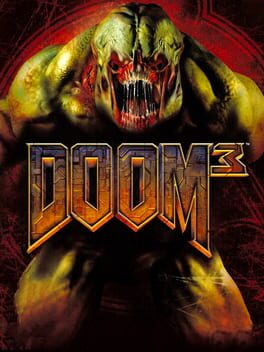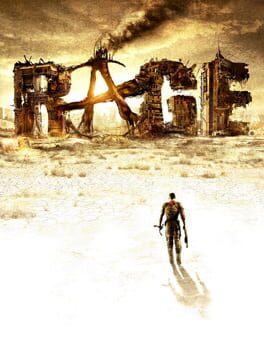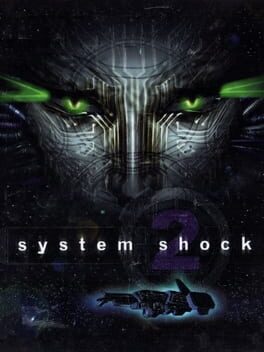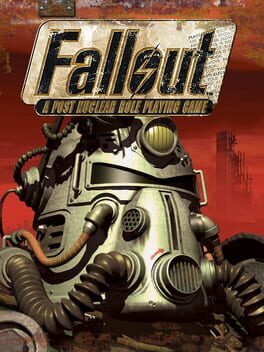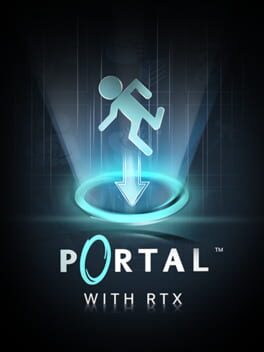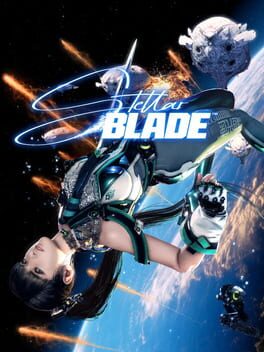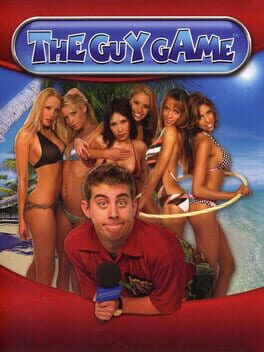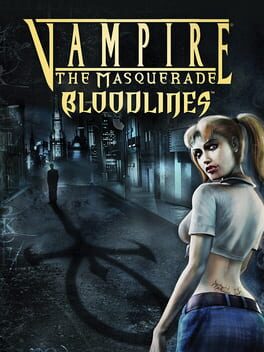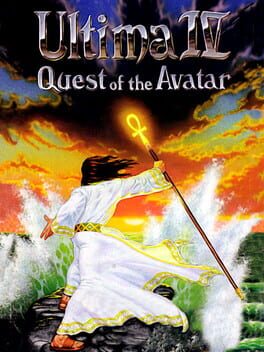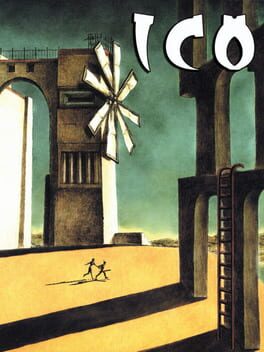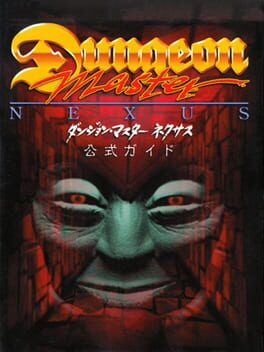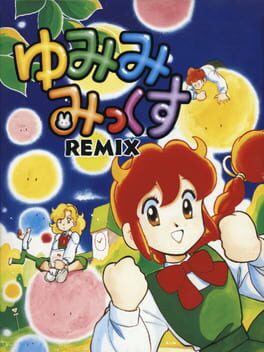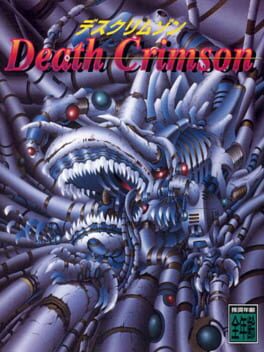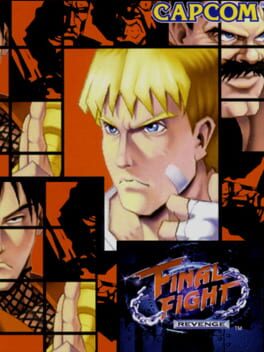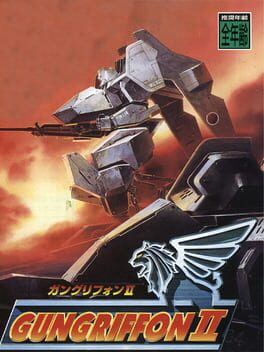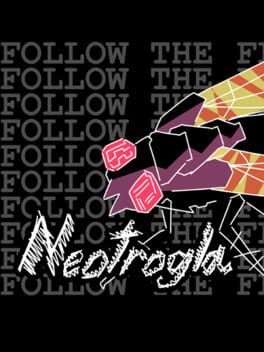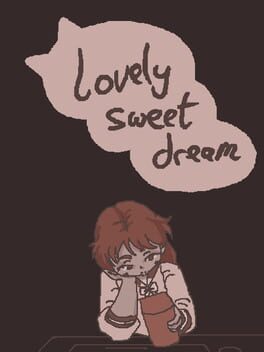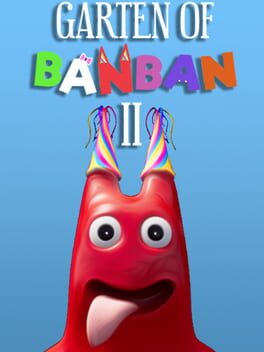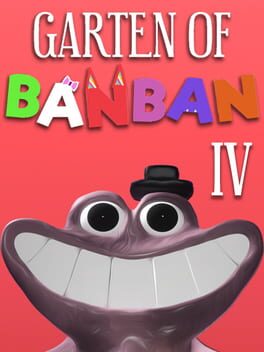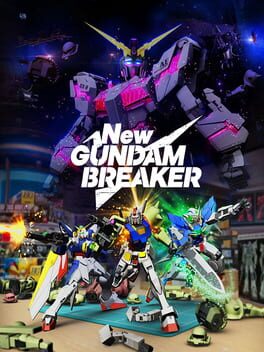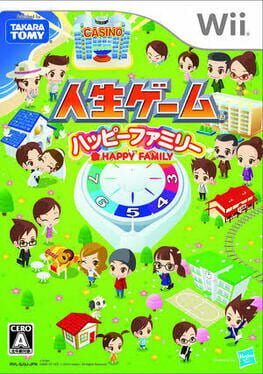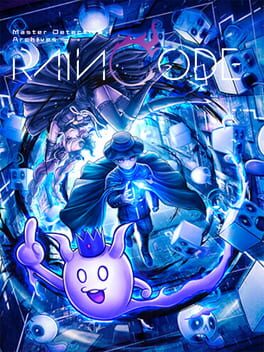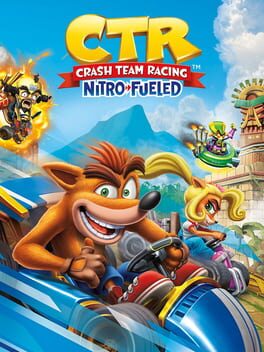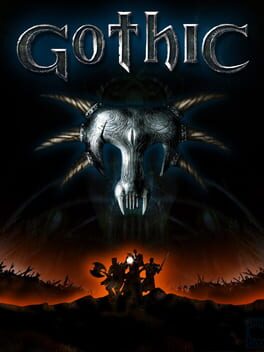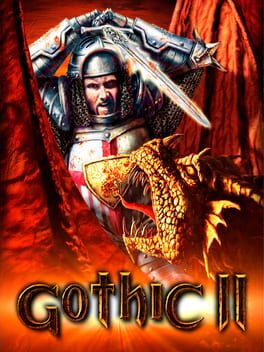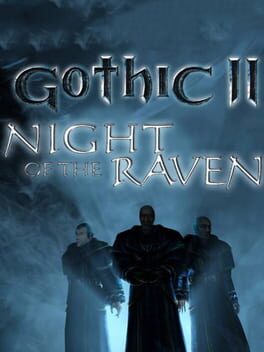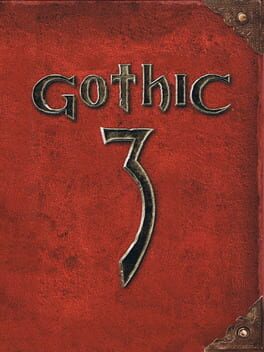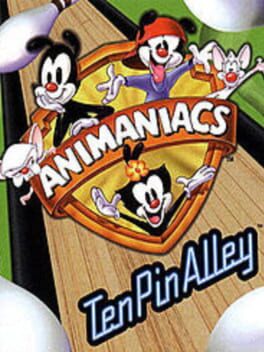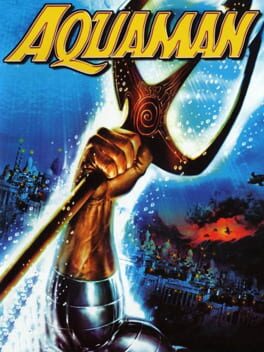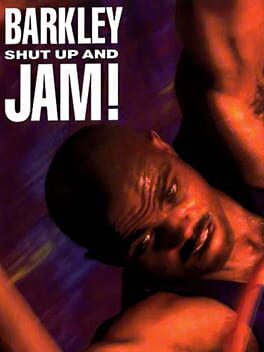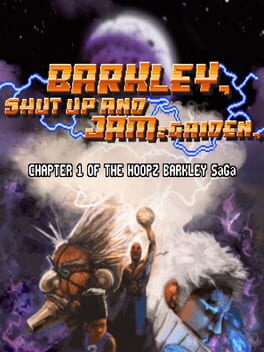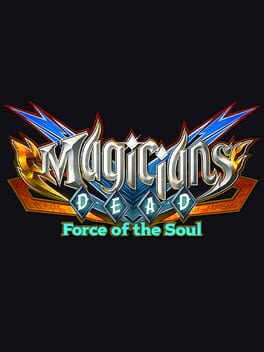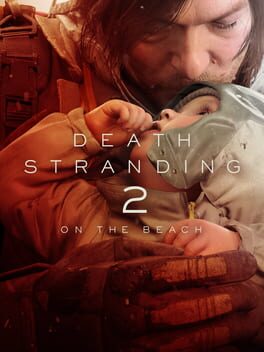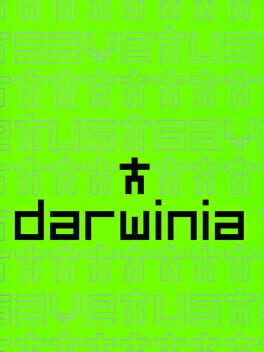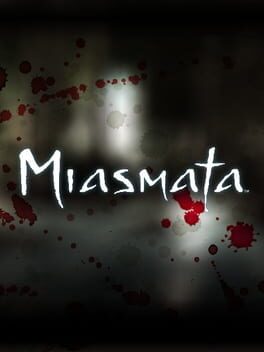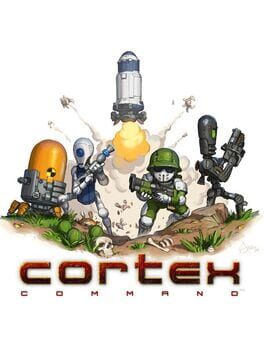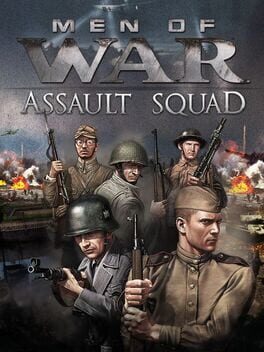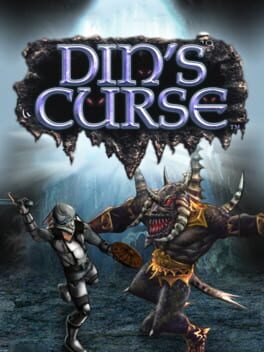snak
333 reviews liked by snak
Doom 3
2004
People give BioShock shit for this all the time, but DOOM 3 is the actual poor man’s System Shock 2 meets Half-Life!
I can’t understate how bad DOOM 3 is. It's the best example of what would happen if someone looked at both of the previously mentioned games and tried to superficially imitate it without understanding why those games worked so well.
DOOM 3 is one of the prime examples of id Software’s dark age, where basically everyone from the old guard, save for John Carmack and a few others like Tim Willits, had left the company, and thus was gone the personality and charm that made id Software’s prior works so memorable, and was replaced with a studio that seemed stuck in the past and didn’t know how to make games fun anymore, where as Valve continued to rise to the top after the huge success of the Half-Life franchise.
Now, conceptually the game itself does sound interesting, it takes the foundation of the original DOOM games, specifically DOOM 64, which was already leaning into horror with the atmosphere, and goes all the way into survival horror territory, or at the very least, it could have? Because here’s the main problem, DOOM 3 feels very much confused, it doesn’t know what it wants to be, and ends up trying to be three things at once, and failing at all of them as well.
But I guess I’d need to explain why those other games work in the first place, to then explain why this one doesn’t, so here we go fellas…
Half-Life
Arguably the most obvious point of comparison, down to even plot beats being ripped straight from it, Half-Life is known for its masterful use of environmental storytelling and player immersion, taking cues from the original DOOM games and making it much more grounded than “marine tears through demons”, but what truly makes Half-Life Half-Life is its gameplay. See, the gameplay itself isn’t just about running around the map killing monsters, and what in DOOM would be diversions from the core gameplay loop (the key/secret hunting) is integral to Half-Life, between gunfights there are also puzzles and platforming segments, and areas can even vary in how their gameplay is structured, going from survival horror-esque segments in the more claustrophobic segments of the Black Mesa facility, to engaging in firefights with the military and the monsters in the desert and etcetera.
In summary, Half-Life is a game that constantly shifts in pacing to make it never get stale, making it so you are never playing through the same chapter for too long (barring Surface Tension), and since often some sections come with setpieces that excellently manage to introduce you to that one chapter, it makes every one of them stand out from each other.
Also ‘On A Rail’ is a very good level.
System Shock 2
System Shock 2 is a pure survival horror at its core, and it manages to knock it out of the park. Using Thief: The Dark Project’s Dark Engine, enemies have audio cues that instill the paranoia on the player, and creates fear not because of the unknown, but because you know there is a looming threat close to you, but you don’t know where they are exactly, and even rooms that might seem safe could have a Cyborg Midwife rushing to your position and messing with your day, and that’s not getting into how your weapons could jam during battle, or you could run out of healing items, or other unfortunate circumstances, though all put in contrast to the RPG systems that allow you circumvent those situations in a number of different ways. And System Shock 2 is no slouch at storytelling either, and is even stronger at it than Half-Life, still similarly using incredible environmental design and storytelling, but also audio logs that spectacularly capture the horrors of being trapped in a place such as the Von Braun while it goes all downhill, seeing the last words of crewmembers, whether they are dying or being turned into part of The Many, is incredibly chilling, and at times the story can reach even philosophical levels, as questions about being an individual or mistakes from the past start to creep up on the player.
I don’t want this to turn into a full blown System Shock 2 review, so to cap it off, the game consistently manages to create horror both with its narrative and moment-to-moment gameplay, while still giving you the tools to fight back against it, or even outright break it (grenade launcher and full agility go bonkers).
Right, back to sadness and darkness, AKA DOOM 3.
DOOM 3 tries to imitate several aspects of these two games, but fails at almost all of them, especially in its (non-)story. And speaking of which, the story is… Fine? Like, it’s pretty much just Half-Life 1 with a bit of System Shock in there as well for good measure and… That’s it. It just lacks the spark that made either of these games from a narrative perspective so interesting, look at the main antagonist for example, he (and Hell) lacks the complex and downright philosophical overtones of S.H.O.D.A.N and The Many as well as the mystery and visual storytelling of Xen and the black ops. Really, it’s barely above Quake 2 in terms of story, except there are more cutscenes than just the ones between each level.
But yeah, that’s still far better than the gameplay itself, which is, at least for almost 80% of the game, shit.
A lot of the gameplay in DOOM 3 feels like a trickle. The weapons are mostly terrible, lacking the beef that they had in the first three games and at times feeling more like peashooters in comparison, especially the INFAMOUS shotgun, and another problem is that it tries to be a survival horror game where you have to deal with low ammo and such, but at its core it’s still a DOOM game, and those two things gel very badly with each other. The enemy encounters are just very lacking for the majority of the game, just repeatedly reusing the same “Imp appears out of a monster closet/portal to kill ya” at a rate having a drink shot for every time that same setup was used would lead me to the fucking hospital, or the even more obnoxious “small melee enemy spam” that the game loves so much that the game has two different enemy types that serve for literally the exact same purpose, be as obnoxious as Fanboy and Chum Chum, and the few interesting enemies the game uses sometimes are either very underutilized like the Pinky (who has got a radical redesign here), or appear way, way later in the game. The level design is generally very dull and boring, just taking place in very samey industrial corridors that would make Quake 2 look like Pizza Tower, and due to taking place in those very samey industrial corridors, significantly cutting down on opportunities for interesting level design beyond reusing the same incredibly flimsy attempts at horror, and by horror I mean “oh look here’s an Imp just behind that door that you could not possibly predict unless you already knew it was there” kind of thing, and after a quarter of the way through the game, I was just expecting for every two rooms to have something like either of those previously mentioned types of encounters, while all following the exact same structure of “pick that keycard/pda to get through that door”, where as 1, 2 and 64, while still following a similar structure, at least incorporated puzzle elements into the mix to make getting each keycard more challenging than just “go through all of those corridors killing enemies”, and occasions that remotely resemble those puzzles from those games are VERY few and far between.
And the end result is a game that is BORING… Really, really, really BORING. While not having many diversions from the core gameplay loop of killing demons isn’t the worst thing, that gameplay loop in question is so repetitive, irritating and busted that after the first hour it becomes a exhaustive slog, and by the time I beat Hell, I was begging for the game to end there.
And speaking of Hell, I want to dedicate a whole paragraph to Hell, the only level that manages to be almost genuinely good and isn’t boring beyond belief. Hell is the highlight of this game, for starters this level is probably the one that best captures the feeling of being in Hell, possibly in the entire series even. You truly feel like a mere mortal that managed to get into a place no one should ever dare to, and the hellish architecture and art direction of this puts every other DOOM game up until that point to shame (yes, I am being serious), I mean just look at that loading screen, it’s so fucking foreboding and awesome it makes me wish the entire game was half as good as this. And in the gameplay department this doesn’t disappoint either, at the start of the level you are starved of ammo and is already forced to fight a Hell Knight with only your shotgun, and this is the ONLY time in the entire game where the atrocious spread of it actually makes a gunfight in this game more intense. The latter half isn’t quite up there, but it still brings to the table some challenging combat encounters using stronger enemies and more tight levels, and the best part is that it ends before boredom starts to creep up, albeit it ends in a disappointing boss fight like with every other DOOM game before it, but at least the game ends in a high note here…
Too bad it doesn’t end in Hell!
I wish every other level in the game was as good as Hell, especially in the art direction (though there are some that try).
Because in terms of sights and sounds this manages to take Quake 2’s already pretty uneven art style and make it even more bland and uninteresting here. As I said before, most levels are just boring gray industrial corridors over and over and over again, and even when there’s a different room that isn’t just that, it’s still unremarkable due to how everything else blends itself together in my mind, and I don’t think that can attributed solely because of its setting, since later on there a few moments that do try to go for something different and start mixing those industrial corridors with hell and it's pretty awesome, but they are tainted by the fact that at their core they are still those same corridors you have been seeing since the very beginning of the game.
And I don’t think this game’s setting is the root cause of this problem, specifically because if I look at a System Shock 2 (literally), while the game does take place almost entirely in a massive Star Trek-esque starship, every area in the game looks and feels different from one another even if they happen to have a similar color palette, most notably because of how each room is carefully laid out to fit that deck’s purpose, and consequently creates several memorable and noteworthy rooms because of that, and that’s not even getting into all of the body horror galore of The Many. DOOM 3 also aspires to do levels that feel like tangible real places, but it lacks the ability to do something interesting with them, and even when it does, it’s way too late in the game. Going into the sounds, they are just there, and when they aren’t just there, they suck. Again, weapons sound more like peashooters or Nerf guns, but that’s par from the course at this point.
Just before wrapping this up, this game is really not scary, I don’t know if it is because it’s a horror shooter and I am naturally far less scared of games where you can directly fight back against the source of those horrors, but yeah, DOOM 3 failed to scare me at all, most notably because of the overuse of the already mentioned to death monster closet jumpscares that are very flimsy to begin with and quickly become predictable, but maybe that’s just me and in reality this is one of the scariest games of all time according to a professional gaming journalism site like IGN or Kotaku (if the latter is even professional).
I might be sounding (or reading) like a broken record at this point, but yeah, DOOM 3 is really that bad. There are certain things I do appreciate and even like about it (again, the Hell level is great, and it does start to pick up steam at the last quarter), especially their ambition in trying to turn DOOM into pure horror affair, but they are bogged down by literally every other bad thing this game does that it is no wonder people don’t really talk about it in the same way they do about Half-Life 2 or F.E.A.R, or even lesser known ones like Dark Corners of the Earth.
They couldn’t even get killing demons right. I’ve seen bad Devour clones that put more effort into how enemies died than DOOM 3.
Though at least it probably still isn’t as bad as Rage…
I can’t understate how bad DOOM 3 is. It's the best example of what would happen if someone looked at both of the previously mentioned games and tried to superficially imitate it without understanding why those games worked so well.
DOOM 3 is one of the prime examples of id Software’s dark age, where basically everyone from the old guard, save for John Carmack and a few others like Tim Willits, had left the company, and thus was gone the personality and charm that made id Software’s prior works so memorable, and was replaced with a studio that seemed stuck in the past and didn’t know how to make games fun anymore, where as Valve continued to rise to the top after the huge success of the Half-Life franchise.
Now, conceptually the game itself does sound interesting, it takes the foundation of the original DOOM games, specifically DOOM 64, which was already leaning into horror with the atmosphere, and goes all the way into survival horror territory, or at the very least, it could have? Because here’s the main problem, DOOM 3 feels very much confused, it doesn’t know what it wants to be, and ends up trying to be three things at once, and failing at all of them as well.
But I guess I’d need to explain why those other games work in the first place, to then explain why this one doesn’t, so here we go fellas…
Half-Life
Arguably the most obvious point of comparison, down to even plot beats being ripped straight from it, Half-Life is known for its masterful use of environmental storytelling and player immersion, taking cues from the original DOOM games and making it much more grounded than “marine tears through demons”, but what truly makes Half-Life Half-Life is its gameplay. See, the gameplay itself isn’t just about running around the map killing monsters, and what in DOOM would be diversions from the core gameplay loop (the key/secret hunting) is integral to Half-Life, between gunfights there are also puzzles and platforming segments, and areas can even vary in how their gameplay is structured, going from survival horror-esque segments in the more claustrophobic segments of the Black Mesa facility, to engaging in firefights with the military and the monsters in the desert and etcetera.
In summary, Half-Life is a game that constantly shifts in pacing to make it never get stale, making it so you are never playing through the same chapter for too long (barring Surface Tension), and since often some sections come with setpieces that excellently manage to introduce you to that one chapter, it makes every one of them stand out from each other.
Also ‘On A Rail’ is a very good level.
System Shock 2
System Shock 2 is a pure survival horror at its core, and it manages to knock it out of the park. Using Thief: The Dark Project’s Dark Engine, enemies have audio cues that instill the paranoia on the player, and creates fear not because of the unknown, but because you know there is a looming threat close to you, but you don’t know where they are exactly, and even rooms that might seem safe could have a Cyborg Midwife rushing to your position and messing with your day, and that’s not getting into how your weapons could jam during battle, or you could run out of healing items, or other unfortunate circumstances, though all put in contrast to the RPG systems that allow you circumvent those situations in a number of different ways. And System Shock 2 is no slouch at storytelling either, and is even stronger at it than Half-Life, still similarly using incredible environmental design and storytelling, but also audio logs that spectacularly capture the horrors of being trapped in a place such as the Von Braun while it goes all downhill, seeing the last words of crewmembers, whether they are dying or being turned into part of The Many, is incredibly chilling, and at times the story can reach even philosophical levels, as questions about being an individual or mistakes from the past start to creep up on the player.
I don’t want this to turn into a full blown System Shock 2 review, so to cap it off, the game consistently manages to create horror both with its narrative and moment-to-moment gameplay, while still giving you the tools to fight back against it, or even outright break it (grenade launcher and full agility go bonkers).
Right, back to sadness and darkness, AKA DOOM 3.
DOOM 3 tries to imitate several aspects of these two games, but fails at almost all of them, especially in its (non-)story. And speaking of which, the story is… Fine? Like, it’s pretty much just Half-Life 1 with a bit of System Shock in there as well for good measure and… That’s it. It just lacks the spark that made either of these games from a narrative perspective so interesting, look at the main antagonist for example, he (and Hell) lacks the complex and downright philosophical overtones of S.H.O.D.A.N and The Many as well as the mystery and visual storytelling of Xen and the black ops. Really, it’s barely above Quake 2 in terms of story, except there are more cutscenes than just the ones between each level.
But yeah, that’s still far better than the gameplay itself, which is, at least for almost 80% of the game, shit.
A lot of the gameplay in DOOM 3 feels like a trickle. The weapons are mostly terrible, lacking the beef that they had in the first three games and at times feeling more like peashooters in comparison, especially the INFAMOUS shotgun, and another problem is that it tries to be a survival horror game where you have to deal with low ammo and such, but at its core it’s still a DOOM game, and those two things gel very badly with each other. The enemy encounters are just very lacking for the majority of the game, just repeatedly reusing the same “Imp appears out of a monster closet/portal to kill ya” at a rate having a drink shot for every time that same setup was used would lead me to the fucking hospital, or the even more obnoxious “small melee enemy spam” that the game loves so much that the game has two different enemy types that serve for literally the exact same purpose, be as obnoxious as Fanboy and Chum Chum, and the few interesting enemies the game uses sometimes are either very underutilized like the Pinky (who has got a radical redesign here), or appear way, way later in the game. The level design is generally very dull and boring, just taking place in very samey industrial corridors that would make Quake 2 look like Pizza Tower, and due to taking place in those very samey industrial corridors, significantly cutting down on opportunities for interesting level design beyond reusing the same incredibly flimsy attempts at horror, and by horror I mean “oh look here’s an Imp just behind that door that you could not possibly predict unless you already knew it was there” kind of thing, and after a quarter of the way through the game, I was just expecting for every two rooms to have something like either of those previously mentioned types of encounters, while all following the exact same structure of “pick that keycard/pda to get through that door”, where as 1, 2 and 64, while still following a similar structure, at least incorporated puzzle elements into the mix to make getting each keycard more challenging than just “go through all of those corridors killing enemies”, and occasions that remotely resemble those puzzles from those games are VERY few and far between.
And the end result is a game that is BORING… Really, really, really BORING. While not having many diversions from the core gameplay loop of killing demons isn’t the worst thing, that gameplay loop in question is so repetitive, irritating and busted that after the first hour it becomes a exhaustive slog, and by the time I beat Hell, I was begging for the game to end there.
And speaking of Hell, I want to dedicate a whole paragraph to Hell, the only level that manages to be almost genuinely good and isn’t boring beyond belief. Hell is the highlight of this game, for starters this level is probably the one that best captures the feeling of being in Hell, possibly in the entire series even. You truly feel like a mere mortal that managed to get into a place no one should ever dare to, and the hellish architecture and art direction of this puts every other DOOM game up until that point to shame (yes, I am being serious), I mean just look at that loading screen, it’s so fucking foreboding and awesome it makes me wish the entire game was half as good as this. And in the gameplay department this doesn’t disappoint either, at the start of the level you are starved of ammo and is already forced to fight a Hell Knight with only your shotgun, and this is the ONLY time in the entire game where the atrocious spread of it actually makes a gunfight in this game more intense. The latter half isn’t quite up there, but it still brings to the table some challenging combat encounters using stronger enemies and more tight levels, and the best part is that it ends before boredom starts to creep up, albeit it ends in a disappointing boss fight like with every other DOOM game before it, but at least the game ends in a high note here…
Too bad it doesn’t end in Hell!
I wish every other level in the game was as good as Hell, especially in the art direction (though there are some that try).
Because in terms of sights and sounds this manages to take Quake 2’s already pretty uneven art style and make it even more bland and uninteresting here. As I said before, most levels are just boring gray industrial corridors over and over and over again, and even when there’s a different room that isn’t just that, it’s still unremarkable due to how everything else blends itself together in my mind, and I don’t think that can attributed solely because of its setting, since later on there a few moments that do try to go for something different and start mixing those industrial corridors with hell and it's pretty awesome, but they are tainted by the fact that at their core they are still those same corridors you have been seeing since the very beginning of the game.
And I don’t think this game’s setting is the root cause of this problem, specifically because if I look at a System Shock 2 (literally), while the game does take place almost entirely in a massive Star Trek-esque starship, every area in the game looks and feels different from one another even if they happen to have a similar color palette, most notably because of how each room is carefully laid out to fit that deck’s purpose, and consequently creates several memorable and noteworthy rooms because of that, and that’s not even getting into all of the body horror galore of The Many. DOOM 3 also aspires to do levels that feel like tangible real places, but it lacks the ability to do something interesting with them, and even when it does, it’s way too late in the game. Going into the sounds, they are just there, and when they aren’t just there, they suck. Again, weapons sound more like peashooters or Nerf guns, but that’s par from the course at this point.
Just before wrapping this up, this game is really not scary, I don’t know if it is because it’s a horror shooter and I am naturally far less scared of games where you can directly fight back against the source of those horrors, but yeah, DOOM 3 failed to scare me at all, most notably because of the overuse of the already mentioned to death monster closet jumpscares that are very flimsy to begin with and quickly become predictable, but maybe that’s just me and in reality this is one of the scariest games of all time according to a professional gaming journalism site like IGN or Kotaku (if the latter is even professional).
I might be sounding (or reading) like a broken record at this point, but yeah, DOOM 3 is really that bad. There are certain things I do appreciate and even like about it (again, the Hell level is great, and it does start to pick up steam at the last quarter), especially their ambition in trying to turn DOOM into pure horror affair, but they are bogged down by literally every other bad thing this game does that it is no wonder people don’t really talk about it in the same way they do about Half-Life 2 or F.E.A.R, or even lesser known ones like Dark Corners of the Earth.
They couldn’t even get killing demons right. I’ve seen bad Devour clones that put more effort into how enemies died than DOOM 3.
Though at least it probably still isn’t as bad as Rage…
Rage
2011
tim willits is a fuckin loser bro. man made some good doom maps (with theresa chasar, his often uncredited sister) and did great work on quake pre-champions, but he never should've been elevated into the position he was by the end of his tenure at id
american mcgee calls him a "serial credit thief" and sandy petersen attributes the collapse of id to his meddling and refers to him only as "snake"; this guy's slime. man was making claims so erroneous that he managed to get both johns to team up on his ass which is saying something. saying he invented DM-only maps for quake when anyone can go check when idmap01 or cross.wad came out for doom, or better yet just think about how goofy it is for five seconds
so what happens when this rat fraud bitch teams up with soulless automaton john carmack? awooga. the most dead eyed fps ever made. together these two men really brought the heat and redefined what it means to be vacant and empty inside. one driven only by a love of machines, the other by cynical careerism. the result would be a tech demo that has virtually no redeeming qualities; even john goodman sounds like he'd rather be anywhere else, and how can you blame him
forget passion or heart or whatever fever drives the average person to create. forget anything that resembles human input. this is referential slop; echoes of better media, better games, better products — cos that's all this thing is at the end of the day — as interpreted and executed by pulseless weirdos. subpar linear shooter, even worse pseudo open world shooter; artless aesthetic sensibilities; internally and externally ugly borderlands gopher bullshit; fallout 3 brown and bloom mad max mcnugget slime created to advance tim willits' career
if I ever write another review this mean it means tim willits just put out another game
american mcgee calls him a "serial credit thief" and sandy petersen attributes the collapse of id to his meddling and refers to him only as "snake"; this guy's slime. man was making claims so erroneous that he managed to get both johns to team up on his ass which is saying something. saying he invented DM-only maps for quake when anyone can go check when idmap01 or cross.wad came out for doom, or better yet just think about how goofy it is for five seconds
so what happens when this rat fraud bitch teams up with soulless automaton john carmack? awooga. the most dead eyed fps ever made. together these two men really brought the heat and redefined what it means to be vacant and empty inside. one driven only by a love of machines, the other by cynical careerism. the result would be a tech demo that has virtually no redeeming qualities; even john goodman sounds like he'd rather be anywhere else, and how can you blame him
forget passion or heart or whatever fever drives the average person to create. forget anything that resembles human input. this is referential slop; echoes of better media, better games, better products — cos that's all this thing is at the end of the day — as interpreted and executed by pulseless weirdos. subpar linear shooter, even worse pseudo open world shooter; artless aesthetic sensibilities; internally and externally ugly borderlands gopher bullshit; fallout 3 brown and bloom mad max mcnugget slime created to advance tim willits' career
if I ever write another review this mean it means tim willits just put out another game
Metroid Fusion
2002
the discomfort zone got too comfortable so we made the comfort zone discomfortable. samus: meet samus
where super dove uncritically into the power fantasy that metroid II (the game with a literal Genocide Counter in the UI) unmasked and deflated, this feels like it's turning it inward against you personally. Your body, Your likeness, and Your autonomy hijacked; Your celebratory past tense role as (repeated) casual annihilationist to reckon with and cower from
it operates as something of a Super Negative Image Metroid: an inversion right down to the uncomfortable, choking grip of the direction. all that clammy ADAMsplaining, those sequestered zones, the redline urgency; everything's dialed perfectly into the exact same channel with uniform intent. even the woozy alien psychedelia's been spirited away in favour of clinical, detached interiors and astroturfed xerox biomes with some of the most appropriately sterile Oops No Backlight lighting on the GBA
and no, it obviously doesn't accomplish the same things as its predecessors, but it's not attempting to. this is a game about lack of control, and altering the format would be akin to breaking the spinal column that holds it upright. fusion's big successes (the pacing, brevity, tonal and thematic consonance, and delicate curation of tension and challenge) are the result of its structural changes. being shunted around a tiny sarcophagus isn't a flaw, it's the entire premise. duh
even without all that though it's impossible for me not to love a game with nightmare, the Profaned Baja Blast Suit, AQA's sunken banger, shots like this, and those absolutely psychotic ridley screams
quite possibly the best SA-X heavy fusion since the sultry sounds of steely dan
where super dove uncritically into the power fantasy that metroid II (the game with a literal Genocide Counter in the UI) unmasked and deflated, this feels like it's turning it inward against you personally. Your body, Your likeness, and Your autonomy hijacked; Your celebratory past tense role as (repeated) casual annihilationist to reckon with and cower from
it operates as something of a Super Negative Image Metroid: an inversion right down to the uncomfortable, choking grip of the direction. all that clammy ADAMsplaining, those sequestered zones, the redline urgency; everything's dialed perfectly into the exact same channel with uniform intent. even the woozy alien psychedelia's been spirited away in favour of clinical, detached interiors and astroturfed xerox biomes with some of the most appropriately sterile Oops No Backlight lighting on the GBA
and no, it obviously doesn't accomplish the same things as its predecessors, but it's not attempting to. this is a game about lack of control, and altering the format would be akin to breaking the spinal column that holds it upright. fusion's big successes (the pacing, brevity, tonal and thematic consonance, and delicate curation of tension and challenge) are the result of its structural changes. being shunted around a tiny sarcophagus isn't a flaw, it's the entire premise. duh
even without all that though it's impossible for me not to love a game with nightmare, the Profaned Baja Blast Suit, AQA's sunken banger, shots like this, and those absolutely psychotic ridley screams
quite possibly the best SA-X heavy fusion since the sultry sounds of steely dan
Half-Life 2
2004
Perhaps I was too harsh on you.
I’ve long stood by the opinion that Half-Life 2 is a bad game. Upon revisiting it, it’s become clear to me that Half-Life 2 is not actually a bad game. Half-Life 2 isn’t a good game, and that’s an important distinction to make.
Half-Life 2 is a game defined by moments, by set pieces; the City 17 escape, piloting the airboat, driving down Highway 17, attacking the prison, rushing through the Citadel. What’s unfortunate, then, is largely how uninteresting most of these moments are. While it’s borderline impossible to downplay genuinely fun moments like sprinting along the rooftops while fleeing from the Combine or fighting off waves of zombies in Ravenholm, these moments don’t make up the bulk of the game. If you took a playthrough of Half-Life 2, exported every single frame, and averaged it out into a single screenshot, you’d wind up a photo of a dune buggy steering around runoff canals.
An inordinate amount of time is spent driving on empty roads, steering through identical-looking pipes and basins, walking along the world’s worst beach with nothing but miles of sand and an ocean you can’t swim in. It’s clear with the frequent stop-and-pop sections that interrupt these driving segments that Valve was trying — crunching, after the beta build leaked — to keep players engaged, but I don’t think they succeeded. To their credit, I suppose that this all feels more like the product of poor decision-making rather than them being forced to throw out their old work and start over from scratch, but that’s some faint fucking praise.
A few conversations with some friends of mine have revealed that, universally, we agree that the strongest thing Half-Life 2 has going for it is its aesthetic. Consider how you personally feel about Half-Life 2’s look and feel to determine whether this is a point of celebration or condemnation. Further, we all agreed that something about this particular aesthetic has been lost over the years since release; Garry’s Mod has diluted it heavily into something more funny than oppressive, whether that be through a variety of wacky game modes where Dr. Kleiner goes sledding and Barney sets up an illegal money printer, or through comedic, face-warping machinima like The Gmod Idiot Box and Half-Life: Full-Life Consequences. All of these are, in a way, Half-Life 2. And it’s no fault of Half-Life 2 that it’s difficult to take seriously in the year 2024 simply because of how its legacy has been warped by fans, but it’s borderline undeniable that these have all had an impact on lessening Half-Life 2’s, uh, impact.
Maybe that’s not entirely fair to Half-Life 2, but I’d counter that, apart from City 17 and the interior of the Citadel, the game is pretty generic. The incredibly long canal, highway, antlion cave, and prison assault sections are all as boring to look at as they are to play through, and they really don’t do a good job of delivering on the Combine-occupied hellscape that was promised when you got off of the tram.
As harsh as I’m being, though, I really don’t think all that poorly of Half-Life 2. It’s definitely a game that keeps souring on me the more time I spend away from it, giving me a chance to actually step back and reflect on the parts I didn’t mind in the moment but don’t care for at all in retrospect. I like the narrative they’ve got going on here. Dropping Gordon into the middle of City 17 without a fucking clue in the world why he’s there or what’s going on is an inspired choice, and it plays nicely into G-Man’s little tease about his employers looking for a soldier they can dump into the middle of an active warzone who’ll start blasting away without asking any questions. Similarly, the Combine that you square off against are stupid fodder who exist purely to get merked en masse, but they’re also a token occupation force comprised primarily of conscripted or traitorous humans wearing alien armor. Spinning blades and cars on winches in Ravenholm can be activated at will either to kill zombies or use the moving parts as platforms to reach other areas. There are quite a few moments where the gameplay exists in complete harmony with the world as it is established, and there are quite a few moments where Gordon Freeman has to stop what he's doing to jump up and down on a seesaw. Truly it is a land of contrasts.
What's here is neither particularly good nor particularly bad, and is in a way remarkable for having such a strong legacy despite standing on such weak legs. People say that you needed to be there when this came out to truly appreciate it, but I think that if something is actually good, then it remains good. There are a lot of games out there that are both far older and far better than Half-Life 2, so I don't adhere to the "poorly aged" argument when it seems significantly more likely that people were just so awed by the tech that they didn't notice the emaciated muscles hanging off of the Source Engine skeleton.
The greatest sin Half-Life 2 commits is making a sequel to Half-Life that's boring.
I’ve long stood by the opinion that Half-Life 2 is a bad game. Upon revisiting it, it’s become clear to me that Half-Life 2 is not actually a bad game. Half-Life 2 isn’t a good game, and that’s an important distinction to make.
Half-Life 2 is a game defined by moments, by set pieces; the City 17 escape, piloting the airboat, driving down Highway 17, attacking the prison, rushing through the Citadel. What’s unfortunate, then, is largely how uninteresting most of these moments are. While it’s borderline impossible to downplay genuinely fun moments like sprinting along the rooftops while fleeing from the Combine or fighting off waves of zombies in Ravenholm, these moments don’t make up the bulk of the game. If you took a playthrough of Half-Life 2, exported every single frame, and averaged it out into a single screenshot, you’d wind up a photo of a dune buggy steering around runoff canals.
An inordinate amount of time is spent driving on empty roads, steering through identical-looking pipes and basins, walking along the world’s worst beach with nothing but miles of sand and an ocean you can’t swim in. It’s clear with the frequent stop-and-pop sections that interrupt these driving segments that Valve was trying — crunching, after the beta build leaked — to keep players engaged, but I don’t think they succeeded. To their credit, I suppose that this all feels more like the product of poor decision-making rather than them being forced to throw out their old work and start over from scratch, but that’s some faint fucking praise.
A few conversations with some friends of mine have revealed that, universally, we agree that the strongest thing Half-Life 2 has going for it is its aesthetic. Consider how you personally feel about Half-Life 2’s look and feel to determine whether this is a point of celebration or condemnation. Further, we all agreed that something about this particular aesthetic has been lost over the years since release; Garry’s Mod has diluted it heavily into something more funny than oppressive, whether that be through a variety of wacky game modes where Dr. Kleiner goes sledding and Barney sets up an illegal money printer, or through comedic, face-warping machinima like The Gmod Idiot Box and Half-Life: Full-Life Consequences. All of these are, in a way, Half-Life 2. And it’s no fault of Half-Life 2 that it’s difficult to take seriously in the year 2024 simply because of how its legacy has been warped by fans, but it’s borderline undeniable that these have all had an impact on lessening Half-Life 2’s, uh, impact.
Maybe that’s not entirely fair to Half-Life 2, but I’d counter that, apart from City 17 and the interior of the Citadel, the game is pretty generic. The incredibly long canal, highway, antlion cave, and prison assault sections are all as boring to look at as they are to play through, and they really don’t do a good job of delivering on the Combine-occupied hellscape that was promised when you got off of the tram.
As harsh as I’m being, though, I really don’t think all that poorly of Half-Life 2. It’s definitely a game that keeps souring on me the more time I spend away from it, giving me a chance to actually step back and reflect on the parts I didn’t mind in the moment but don’t care for at all in retrospect. I like the narrative they’ve got going on here. Dropping Gordon into the middle of City 17 without a fucking clue in the world why he’s there or what’s going on is an inspired choice, and it plays nicely into G-Man’s little tease about his employers looking for a soldier they can dump into the middle of an active warzone who’ll start blasting away without asking any questions. Similarly, the Combine that you square off against are stupid fodder who exist purely to get merked en masse, but they’re also a token occupation force comprised primarily of conscripted or traitorous humans wearing alien armor. Spinning blades and cars on winches in Ravenholm can be activated at will either to kill zombies or use the moving parts as platforms to reach other areas. There are quite a few moments where the gameplay exists in complete harmony with the world as it is established, and there are quite a few moments where Gordon Freeman has to stop what he's doing to jump up and down on a seesaw. Truly it is a land of contrasts.
What's here is neither particularly good nor particularly bad, and is in a way remarkable for having such a strong legacy despite standing on such weak legs. People say that you needed to be there when this came out to truly appreciate it, but I think that if something is actually good, then it remains good. There are a lot of games out there that are both far older and far better than Half-Life 2, so I don't adhere to the "poorly aged" argument when it seems significantly more likely that people were just so awed by the tech that they didn't notice the emaciated muscles hanging off of the Source Engine skeleton.
The greatest sin Half-Life 2 commits is making a sequel to Half-Life that's boring.
System Shock 2
1999
In designing System Shock and Thief: The Dark Project, Looking Glass Studios aimed to achieve a "role-playing" experience that was quite different from videogames that drew their mechanics directly from tabletop RPGs. A key insight was that much of the arithmetic that in a tabletop environment might burden players and DMs alike could, in a digital environment, be handled more or less exclusively by the computer. A certain minimum of numerical awareness on the player's part is still necessary (health, ammo, etc), but there is simply no need for the usual RPG rube goldberg machine of having to do things to cause some numbers to go up to get some other numbers to go up in order to get the numbers you actually want to go up to go up.... Far more elegant approaches to player progression are now possible, and what Looking Glass achieved with System Shock—progression based on collecting equipment and suit upgrades—converges onto territory analogous to what Jeremy Parish charts in the transition from the console action-RPG to the metroidvania.
True, SS2's leveling system (by another name) is not exactly the sadly familiar contraption described above, but there is still a diegetically nonsensical experience currency that muddies the intuition driving the equipment-based elegance of SS1. True, grinding is not possible, but like all RPGs even with grinding, the whole system progressively locks the player out of options as the game advances, which by a sleight of hand is disguised as "choice." It is expressive enough that I may choose which weapons to fill my limited inventory space with, attending to the limitations imposed by the available resources (ammo, energy, etc), without forcing me to put points into a skill tree to use them effectively, or at all.
I'm admittedly being perverse in framing the benefit of such systems as a disadvantage when it's really a tradeoff: these systems allow for distinct paths of player character growth which, to be meaningful, must be mutually exclusive. That's nice. I prefer it the other way. ¯\(ツ)/¯
True, SS2's leveling system (by another name) is not exactly the sadly familiar contraption described above, but there is still a diegetically nonsensical experience currency that muddies the intuition driving the equipment-based elegance of SS1. True, grinding is not possible, but like all RPGs even with grinding, the whole system progressively locks the player out of options as the game advances, which by a sleight of hand is disguised as "choice." It is expressive enough that I may choose which weapons to fill my limited inventory space with, attending to the limitations imposed by the available resources (ammo, energy, etc), without forcing me to put points into a skill tree to use them effectively, or at all.
I'm admittedly being perverse in framing the benefit of such systems as a disadvantage when it's really a tradeoff: these systems allow for distinct paths of player character growth which, to be meaningful, must be mutually exclusive. That's nice. I prefer it the other way. ¯\(ツ)/¯
Fallout
1997
Genuinely cannot emphasize more how genius the water chip quest is, you're given damn near 0 info and sent out into the wasteland with a note and a time limit. Sure you have the entire world to explore but there's a constant deadline breathing down your neck. You can't really just faff about until you feel like doing the main quest, you have to actively be asking questions while also exploring knowing that everything you're doing is in service of this purpose. Genuinely one of the few games I've played that gave me that feeling. Exploration and sidequests not being distractions from the main quest rather, a means to accomplish them. It's a sick game with a cool atmosphere and surprisingly stellar voice acting and I love how you can complete the last few dungeons fully pacifist but man those first few hours were good.
Damn I might be crpgpilled now...
Damn I might be crpgpilled now...
Portal with RTX
2022
This has to be the funniest marketing gimmick ever made. Honestly. It makes the Hatsune Miku Dominos promotion or the Saint's Row 4 ultimate edition seem tame.
For starters, it's just a copy of Portal with an RTX Remix injector bundled on. It comes with the dev menu.If you want to play Portal 1 for free you can get this, push Alt+X and disable everything. [This ended up not being true, I forgot that I owned Portal 1.]
But if you want to actually experience the shitshow that is Portal With RTX, you can also just open the menu and undo the shitty DLSS upscaler preset the game comes with. Setting it to any of the normal presets massively boosts performance. Yes, the default settings are an attempt to convey to laymen that their RTX card isn't good enough and they need a better one.
As for the actual game, it's a fascinating look into the minds of people obsessed with 'graphics' as a concept to such an extent that it becomes a detriment.
Portal With RTX looks terrible. Just absolute dogshit. I think whoever signed off on this should be forced to do a Drama course in University using only Garry's Mod models and lighting.
The original Portal has a very intentional, meticulously refined aesthetic. It is very bright, cold, and unwelcoming. Almost nothing in Aperture is rounded, with most of the geometry being angular brutalist walls and panels that look about as inviting as a field of landmines. It's very obvious just from 5-10 minutes of Portal that nothing lives in Aperture and nobody has been there in ages. Later on, you literally pull back the curtain of the testing chambers and run through back corridors, maintenance shafts and warehouses which completely turn the aesthetic on its head... By design. Intent. Yes, that's the word we're focusing on: 'Intent'.
Because Portal With RTX takes a sledgehammer to that meticuously crafted aesthetic. Chambers are now much darker, being lit up by overtuned light sources cast by either the few ambient lights, the lights bolted onto doors, or the red buttons. The latter in particular bathe everything in a sickening red glow that's so overdone it makes many Garry's Mod maps seem like professional work. There isn't really much of a difference now between the chambers and the lategame areas as a result.
But.
But.
There's a worse problem.
Whenever I talk about game design to people I'm friends with, I will more likely than not bring up Valve's amazing ability to signpost things without explicitly having a character say "go here", or having a big flashing arrow on the HUD telling you where to go. Most of the time they'll simply have lights, a literal sign, or clever lighting to guide you. Portal 1 in particular was great for this.
Portal With RTX is horrible. The 'modern' lighting gives equal importance to everything, and in a game where the lighting was handcrafted, this means player guidance is at an all time low. I cannot imagine this being your first experience with Portal, or Valve games.
Now, I'm a Portal autist, if you put a gun to my head and told me to run this game blindfolded, I'd be done before you had the gun loaded. For someone whose first experience with Portal is this game, though? They're in for a world of hurt, because in some chambers the lighting is so bad that it can be difficult to see cubes or doors at first. The later areas are sometimes pitch black, which is an awful statement to make about a mod for a game where nothing is pitch black BY DESIGN.
When I say "This is just Portal 1 with an RTX injector", there's no word of a lie there...
...Which means the developer commentary is still there. Yes, you can listen to the minds at Valve Software elucidate you as to how they very intentionally, carefully and almost neurotically tailored every single aspect of this game to perfection, all while playing a mod that's about as carefully created as AI art.
And you know what? AI art is a good comparison, because this feels like AI art. There's no regard for design, or consistency, or that magical keyword intent. Just a manic, soul-destroying fixation on 'looking good'. Beauty doesn't have to mean anything to these people, it just has to look good at a cursory glance. Spiritually, there's no difference between this... """product""", and going onto Midjourney and typing "portal realistic". This is very clearly a product made by and targeted at an audience for whom the word 'better' automatically means 'prettier'.
I was neutral on raytracing before actually getting a card capable of it, not really caring for the whole debate. I found devout shooters of it to be annoying, and devout haters of it to be wasting their time on what I perceived as the little brother to PhysX and HairWorks - two of Nvidia's other gimmicks that everyone replicated with ease.
After this, and seeing how ineffectual it is in Cyberpunk 2077/Mechwarrior 5/Resident Evil 4? Raytracing is a scam, dude. You can do better shit with Reshade, and it's free.
The original Portal is ten dollars. On sale, it usually becomes a dollar. Go play that instead.
For starters, it's just a copy of Portal with an RTX Remix injector bundled on. It comes with the dev menu.
But if you want to actually experience the shitshow that is Portal With RTX, you can also just open the menu and undo the shitty DLSS upscaler preset the game comes with. Setting it to any of the normal presets massively boosts performance. Yes, the default settings are an attempt to convey to laymen that their RTX card isn't good enough and they need a better one.
As for the actual game, it's a fascinating look into the minds of people obsessed with 'graphics' as a concept to such an extent that it becomes a detriment.
Portal With RTX looks terrible. Just absolute dogshit. I think whoever signed off on this should be forced to do a Drama course in University using only Garry's Mod models and lighting.
The original Portal has a very intentional, meticulously refined aesthetic. It is very bright, cold, and unwelcoming. Almost nothing in Aperture is rounded, with most of the geometry being angular brutalist walls and panels that look about as inviting as a field of landmines. It's very obvious just from 5-10 minutes of Portal that nothing lives in Aperture and nobody has been there in ages. Later on, you literally pull back the curtain of the testing chambers and run through back corridors, maintenance shafts and warehouses which completely turn the aesthetic on its head... By design. Intent. Yes, that's the word we're focusing on: 'Intent'.
Because Portal With RTX takes a sledgehammer to that meticuously crafted aesthetic. Chambers are now much darker, being lit up by overtuned light sources cast by either the few ambient lights, the lights bolted onto doors, or the red buttons. The latter in particular bathe everything in a sickening red glow that's so overdone it makes many Garry's Mod maps seem like professional work. There isn't really much of a difference now between the chambers and the lategame areas as a result.
But.
But.
There's a worse problem.
Whenever I talk about game design to people I'm friends with, I will more likely than not bring up Valve's amazing ability to signpost things without explicitly having a character say "go here", or having a big flashing arrow on the HUD telling you where to go. Most of the time they'll simply have lights, a literal sign, or clever lighting to guide you. Portal 1 in particular was great for this.
Portal With RTX is horrible. The 'modern' lighting gives equal importance to everything, and in a game where the lighting was handcrafted, this means player guidance is at an all time low. I cannot imagine this being your first experience with Portal, or Valve games.
Now, I'm a Portal autist, if you put a gun to my head and told me to run this game blindfolded, I'd be done before you had the gun loaded. For someone whose first experience with Portal is this game, though? They're in for a world of hurt, because in some chambers the lighting is so bad that it can be difficult to see cubes or doors at first. The later areas are sometimes pitch black, which is an awful statement to make about a mod for a game where nothing is pitch black BY DESIGN.
When I say "This is just Portal 1 with an RTX injector", there's no word of a lie there...
...Which means the developer commentary is still there. Yes, you can listen to the minds at Valve Software elucidate you as to how they very intentionally, carefully and almost neurotically tailored every single aspect of this game to perfection, all while playing a mod that's about as carefully created as AI art.
And you know what? AI art is a good comparison, because this feels like AI art. There's no regard for design, or consistency, or that magical keyword intent. Just a manic, soul-destroying fixation on 'looking good'. Beauty doesn't have to mean anything to these people, it just has to look good at a cursory glance. Spiritually, there's no difference between this... """product""", and going onto Midjourney and typing "portal realistic". This is very clearly a product made by and targeted at an audience for whom the word 'better' automatically means 'prettier'.
I was neutral on raytracing before actually getting a card capable of it, not really caring for the whole debate. I found devout shooters of it to be annoying, and devout haters of it to be wasting their time on what I perceived as the little brother to PhysX and HairWorks - two of Nvidia's other gimmicks that everyone replicated with ease.
After this, and seeing how ineffectual it is in Cyberpunk 2077/Mechwarrior 5/Resident Evil 4? Raytracing is a scam, dude. You can do better shit with Reshade, and it's free.
The original Portal is ten dollars. On sale, it usually becomes a dollar. Go play that instead.
ENTRYWAY
thirty second par
but how could anybody
want to leave so soon
initially my plan was to write a series of 32 haikus, one for each level, with the intention of succinctly boiling things down into a heartfelt gesture. the problem there's that doom II's anything but succinct; it's a towering, monolithic game that bears down on you at all times. breathless formatting, increased enemy numbers, more byzantine, avant garde mapping, chaotic texturing, new enemies, and a one-of-a-kind fan community that's opened up an endless limitless world of More Doom and turned it into something you could spend a lifetime emerged in without seeing everything worthwhile or learning all its finest details. to try to sum things up poetically is a fool's errand; doom II can't be boiled down into 544 syllables, least of all by me
REFUELING BASE
this from the man who
put 95 spawns into
quake episode 4
a narrative has developed that suggests doom II's second half is something irredeemable — not just underwhelming, but outright bad — and it's a load of shit. if you don't like TENEMENTS or COURTYARD that's an indictment of your taste, not the quality of the mapping present here. the way sandy in particular maps with such expressive, inventive, and experimental brushstrokes is something we should relish and appreciate; doom and quake wouldn't be what they are without his contributions, and he's one of the genre's most important level designers hands down
that the game feels like a fever dream is largely a result of his 17(!!!!) maps and their wild refusal to adhere to conventional logic or standard. people out here begging and crying for euclidian techbases when my man barfed textures in a pile and turned it into something as good as TRICKS AND TRAPS. "SUBURBS ISNT REALISTIC" you scream into your pillow while I smile big with my cute dimples showing cos I'm enjoying a really fun map. "CHASM IS BAD" you shriek so loud you get evicted while I enjoy some first person platforming and reminisce about turok dinosaur hunter being the best game on the N64. no one, and I mean No One advanced the space for creation here more substantially. fuck verisimilitude, let's dance
SUBURBS
welcome all neighbors
to our annual cookout
bring your own bodies
they could've called it perfect doom: an evolutionary step that marked its final form and near-complete status as a standardized toolset. they could've dropped the number and signaled it as just being a big ass messy sloppy cuhrazy megawad and called it a day and 99% of the shit talk would be stopped in its erroneous tracks. really, I don't even think there's a good argument that doom's better unless you're looking at it as some hermetically pure retail project rather than a couplet of frameworks or stepping stones to greater ideas. hindsight is 50/50, but we're graced with enough distance now to know that any assessment of the material should be done while understanding what it wrought; that none of this exists in that Big Box Vacuum and never really did — shareware being the first and last exposure many, many people had in the first place, and doom always being a game that's chopped n screwed in as many ways as possible. doom is ragged and raw; it's tendrils, it's wild kudzu and overgrowth and every idea every middle schooler ever jotted in a notebook. to appraise this in a sanitized quarantine is geek shit I simply can't abide by. this is an immaculate vessel that had the good grace to show up with 32 mostly sick maps
THE FACTORY
fifty indie games
that look exactly like this
steam early access
if any game exists as some kind of broad communal accomplishment, it's probably doom. opening with an open source branch to the community, and closing long after we're buried in our technograves. ads for lotions interrupt our epitaphs while someone named grizzlyguzzler releases the cacoward winning "scronky bonky II" and sets neo doomworld ablaze with passionate discussion. Did You See The Part Where. I Can't Believe That. How Did They Even...
billionaires in bad suits pump sicko dollars into metaverses and games-within-games-within-games; some eternal platform-slash-cenotaph is conjured by the world's most killable humans; disfigured 3D models waggle and wave in cyberspace trying desperately to create something as remotely meaningful, intravenously sucking on your wallet to please money perverts before being sent to the scrap heap
good luck
DEAD SIMPLE
perfect little map
the homages will go on
past our life and death
thirty second par
but how could anybody
want to leave so soon
initially my plan was to write a series of 32 haikus, one for each level, with the intention of succinctly boiling things down into a heartfelt gesture. the problem there's that doom II's anything but succinct; it's a towering, monolithic game that bears down on you at all times. breathless formatting, increased enemy numbers, more byzantine, avant garde mapping, chaotic texturing, new enemies, and a one-of-a-kind fan community that's opened up an endless limitless world of More Doom and turned it into something you could spend a lifetime emerged in without seeing everything worthwhile or learning all its finest details. to try to sum things up poetically is a fool's errand; doom II can't be boiled down into 544 syllables, least of all by me
REFUELING BASE
this from the man who
put 95 spawns into
quake episode 4
a narrative has developed that suggests doom II's second half is something irredeemable — not just underwhelming, but outright bad — and it's a load of shit. if you don't like TENEMENTS or COURTYARD that's an indictment of your taste, not the quality of the mapping present here. the way sandy in particular maps with such expressive, inventive, and experimental brushstrokes is something we should relish and appreciate; doom and quake wouldn't be what they are without his contributions, and he's one of the genre's most important level designers hands down
that the game feels like a fever dream is largely a result of his 17(!!!!) maps and their wild refusal to adhere to conventional logic or standard. people out here begging and crying for euclidian techbases when my man barfed textures in a pile and turned it into something as good as TRICKS AND TRAPS. "SUBURBS ISNT REALISTIC" you scream into your pillow while I smile big with my cute dimples showing cos I'm enjoying a really fun map. "CHASM IS BAD" you shriek so loud you get evicted while I enjoy some first person platforming and reminisce about turok dinosaur hunter being the best game on the N64. no one, and I mean No One advanced the space for creation here more substantially. fuck verisimilitude, let's dance
SUBURBS
welcome all neighbors
to our annual cookout
bring your own bodies
they could've called it perfect doom: an evolutionary step that marked its final form and near-complete status as a standardized toolset. they could've dropped the number and signaled it as just being a big ass messy sloppy cuhrazy megawad and called it a day and 99% of the shit talk would be stopped in its erroneous tracks. really, I don't even think there's a good argument that doom's better unless you're looking at it as some hermetically pure retail project rather than a couplet of frameworks or stepping stones to greater ideas. hindsight is 50/50, but we're graced with enough distance now to know that any assessment of the material should be done while understanding what it wrought; that none of this exists in that Big Box Vacuum and never really did — shareware being the first and last exposure many, many people had in the first place, and doom always being a game that's chopped n screwed in as many ways as possible. doom is ragged and raw; it's tendrils, it's wild kudzu and overgrowth and every idea every middle schooler ever jotted in a notebook. to appraise this in a sanitized quarantine is geek shit I simply can't abide by. this is an immaculate vessel that had the good grace to show up with 32 mostly sick maps
THE FACTORY
fifty indie games
that look exactly like this
steam early access
if any game exists as some kind of broad communal accomplishment, it's probably doom. opening with an open source branch to the community, and closing long after we're buried in our technograves. ads for lotions interrupt our epitaphs while someone named grizzlyguzzler releases the cacoward winning "scronky bonky II" and sets neo doomworld ablaze with passionate discussion. Did You See The Part Where. I Can't Believe That. How Did They Even...
billionaires in bad suits pump sicko dollars into metaverses and games-within-games-within-games; some eternal platform-slash-cenotaph is conjured by the world's most killable humans; disfigured 3D models waggle and wave in cyberspace trying desperately to create something as remotely meaningful, intravenously sucking on your wallet to please money perverts before being sent to the scrap heap
good luck
DEAD SIMPLE
perfect little map
the homages will go on
past our life and death
Black Mesa
2015
black mesa flip-flops between wanting to stay beholden to the original game with newer technology and re-contextualization from prior half-life games, and just completely putting a spin on HL1 - but the latter tends to present itself as the game's way, way weaker moments and it absolutely cannot be more frustrating how much they hold they hold this game back.
i can, at least, sing praises for how jaw-droppingly gorgeous black mesa is, especially given the use of the source 1 engine, in addition to just how masterfully the tragedy of the black mesa incident is shown. HL1 had already done a great job in that regard, but BM takes it to another level - extra dialogue, variations of scientists and security guards and added detail to every map make it feel much more like a real workplace, and the absolute tide-turner that are the surface chapters encompass the absolute stress and overwhelming despair of those who didn't make it during the HECU's last stand and eventual retreat so damn well through the soundtrack, setpieces and wonderfully acted radio transmissions blaring various marines' desperate pleas for help and last words. there's a section in around surface tension that really gets me - where a lone marine, echo-3 juliet, weakily calls out on the radio after his team gets ambushed by alien soldiers mortally wounds him. unable to heal himself, he ends up succumbing to his wounds over the radio.
it's little things like that which can go a long way to illustrate how majorly fucked up the black mesa incident was - an otherwise normal workday gone completely awry, dooming many people only trying to survive. HL2's looming presence also benefits the game greatly in this regard, with characters like eli and kleiner retroactively and seamlessly being integrated into the opening chapter, and also as you overhear emergency alerts progress further and further in urgency, to a point where the president orders a total evacuation of new mexico - foreshadowing HL2's threat of the resonance cascade being much, much worse than just a hostile takeover of black mesa.
the fun stops when black mesa isn't riding off HL1's coattails. for starters, multiple maps force you into routes completely different from the original game with the original sections barricaded for seemingly no reason - these tend to take FAR too much longer than the original level design and really just waste far more time
several puzzles and other sections have been significantly dumbed down which as a whole makes them far less uninteresting (and somewhat abandons the "think" in "run, shoot, think, live") - the entire vent maze in "we've got hostiles" is gone, the tripmines in surface tension are completely visible which eliminates you needing to clear them out and turns it into awkwardly tip-toeing around them (and praying you don't activate their hitboxes anyway - by the way, the surrounding areas with enemy encounters, including the helicopter are also completely gone), and on a rail's maze-like level design is now a pathetic straight shot because people kept complaining about it in the original game
the HECU are abominably more retarded compared to their HL1 counterparts - i'm pretty sure their AI is based off the combine soliders from HL2 and it shows in how crazily omnipotent they are, reducing most chances for you to sneak your way around enemy encounters like you originally could to make up for their brilliant strategy of "get directly into freeman's line of fire" - though this at the very least tends to be somewhat alleviated with the map design.
and then there's xen.
what the fuck happened here?
i think it's already one thing to completely turn xen's barely hospitable, logic-defying, foreboding wasteland into this pretty, serene, teeming-with-beautiful-life alien planet-looking area, and is it pretty? yeah, admittedly, it's one of the best looking maps i've seen in the source engine, but xen is supposed to be an interdimensional train station hurriedly converted into something the nihilanth's troops could live in. "oh but it's just a different interpretation" isn't an excuse - you might as well have sent freeman to an alien planet with BM's take on it.
that having been said, it wouldn't actually sour my opinion on BM's take on xen all that much if it wasn't dramatically worse than the original game's area in terms of level design.
for some reason, crowbar collective thought it wise to comically extend the playtime of HL1's most scorned chapters in an attempt to.. address those complaints? interloper alone can take up to a whopping two hours of basic-yet-repetitive "insert plug into socket" puzzles and visually aggressive combat sequences compared to the original's relatively short platforming sections. you're no longer turning the hunter gonarch into the hunted, you're now spending an hour running away from the damn thing before you tackle it head-on one last time. i don't understand why the devs decided xen needed to be this much longer - nobody does, really!
crowbar collective's ambitions end up souring the game at multiple points, and while i can't fault them for being passionate about the franchise and wanting to one-up half-life source by giving HL1 the remake it truly deserves, i can fault them for misunderstanding many things which make HL1 so good. the airtight pacing, the brain-scratching puzzles, the tense combat sections - black mesa is not a bad game by any stretch of the imagination and i love a lot of when it does for HL1 storytelling-wise, but unless it's directly borrowing from valve's work, those three core values of HL1's gameplay really aren't done the service they truly deserve.
i can, at least, sing praises for how jaw-droppingly gorgeous black mesa is, especially given the use of the source 1 engine, in addition to just how masterfully the tragedy of the black mesa incident is shown. HL1 had already done a great job in that regard, but BM takes it to another level - extra dialogue, variations of scientists and security guards and added detail to every map make it feel much more like a real workplace, and the absolute tide-turner that are the surface chapters encompass the absolute stress and overwhelming despair of those who didn't make it during the HECU's last stand and eventual retreat so damn well through the soundtrack, setpieces and wonderfully acted radio transmissions blaring various marines' desperate pleas for help and last words. there's a section in around surface tension that really gets me - where a lone marine, echo-3 juliet, weakily calls out on the radio after his team gets ambushed by alien soldiers mortally wounds him. unable to heal himself, he ends up succumbing to his wounds over the radio.
it's little things like that which can go a long way to illustrate how majorly fucked up the black mesa incident was - an otherwise normal workday gone completely awry, dooming many people only trying to survive. HL2's looming presence also benefits the game greatly in this regard, with characters like eli and kleiner retroactively and seamlessly being integrated into the opening chapter, and also as you overhear emergency alerts progress further and further in urgency, to a point where the president orders a total evacuation of new mexico - foreshadowing HL2's threat of the resonance cascade being much, much worse than just a hostile takeover of black mesa.
the fun stops when black mesa isn't riding off HL1's coattails. for starters, multiple maps force you into routes completely different from the original game with the original sections barricaded for seemingly no reason - these tend to take FAR too much longer than the original level design and really just waste far more time
several puzzles and other sections have been significantly dumbed down which as a whole makes them far less uninteresting (and somewhat abandons the "think" in "run, shoot, think, live") - the entire vent maze in "we've got hostiles" is gone, the tripmines in surface tension are completely visible which eliminates you needing to clear them out and turns it into awkwardly tip-toeing around them (and praying you don't activate their hitboxes anyway - by the way, the surrounding areas with enemy encounters, including the helicopter are also completely gone), and on a rail's maze-like level design is now a pathetic straight shot because people kept complaining about it in the original game
the HECU are abominably more retarded compared to their HL1 counterparts - i'm pretty sure their AI is based off the combine soliders from HL2 and it shows in how crazily omnipotent they are, reducing most chances for you to sneak your way around enemy encounters like you originally could to make up for their brilliant strategy of "get directly into freeman's line of fire" - though this at the very least tends to be somewhat alleviated with the map design.
and then there's xen.
what the fuck happened here?
i think it's already one thing to completely turn xen's barely hospitable, logic-defying, foreboding wasteland into this pretty, serene, teeming-with-beautiful-life alien planet-looking area, and is it pretty? yeah, admittedly, it's one of the best looking maps i've seen in the source engine, but xen is supposed to be an interdimensional train station hurriedly converted into something the nihilanth's troops could live in. "oh but it's just a different interpretation" isn't an excuse - you might as well have sent freeman to an alien planet with BM's take on it.
that having been said, it wouldn't actually sour my opinion on BM's take on xen all that much if it wasn't dramatically worse than the original game's area in terms of level design.
for some reason, crowbar collective thought it wise to comically extend the playtime of HL1's most scorned chapters in an attempt to.. address those complaints? interloper alone can take up to a whopping two hours of basic-yet-repetitive "insert plug into socket" puzzles and visually aggressive combat sequences compared to the original's relatively short platforming sections. you're no longer turning the hunter gonarch into the hunted, you're now spending an hour running away from the damn thing before you tackle it head-on one last time. i don't understand why the devs decided xen needed to be this much longer - nobody does, really!
crowbar collective's ambitions end up souring the game at multiple points, and while i can't fault them for being passionate about the franchise and wanting to one-up half-life source by giving HL1 the remake it truly deserves, i can fault them for misunderstanding many things which make HL1 so good. the airtight pacing, the brain-scratching puzzles, the tense combat sections - black mesa is not a bad game by any stretch of the imagination and i love a lot of when it does for HL1 storytelling-wise, but unless it's directly borrowing from valve's work, those three core values of HL1's gameplay really aren't done the service they truly deserve.
Portal 2
2011
Going back to things you loved in your youth is always an uncomfortable gamble, because there's a 50/50 chance you'll either find a brand new appreciation for it in your old age or you'll suck air through your teeth every five minutes and murmur "Ah, jeez." to yourself.
Portal 2 is a unique oddity for me in that the 50/50 chance rolled 100/100 and I had both experiences, sometimes consecutively and sometimes concurrently. It's not helped by me being on a bit of a Valve kick and this was at the end of my replay list, which really highlights its status as their most oddball game.
Before I begin, it's absolutely worth restating just how much of a massive chokehold Valve had on nerd culture in the 2000s and very early 2010s. Having grown up around nerds and spent the vast majority of my education studying IT, the word 'cake' made me flinch up until around 2015. Even had I not actually replayed this game, I could likely recite the entire script because near enough every single line had been parroted and warped into some bizarre facsimile of humor by one specific corner of nerd culture.
I am not going to pretend I'm above the people I'm dunking on, because as late as June this year I made gauche "Grabbin' pills!" references while playing Project Zomboid and my last L4D2 runthrough with a friend saw me play necromancer to a host of jokes older than my nephew. Some diseases don't get slept off I'm afraid.
This Valve Mania was a precursor to a lot of modern developer worship cults, and like those it left a not insignificant amount of people with a general unwillingness to approach Valve games as anything other than holy relics. I, again, was one of those people for a time.
And... Having replayed all of their other singleplayer games till now? I get it. Even with flaws that're apparent as an adult, all of their games have airtight pacing, design that's still barely matched by a lot of their contemporaries, amazing unspoken player guidance and a phenomenal blend of narrative and gameplay - in part due to having the former take a backseat 99% of the time.
Except Portal 2, which stands as an oddball among their SP catalogue because most of those don't apply.
The original Portal is as close to a perfect game as the medium gets, really. Its pacing is sanded to a monofilament point, it discards more obvious handholding/directions with gentle nudges and intuitive signposting, the story runs concurrent with the gameplay but never usurps it, the comedy is rapidfire and laden with jokes that betray a lot about the setting as a means to not do exposition, and a slow but methodical rollout of mechanics that keep the game interesting until the credits roll. Plus, shirking the trends that were already endemic at the time, the game was set in this cold, sterile and lifeless testing facility that somehow looked more inhumane than the endless greybrown corridors of early FPS games.
It was a huge hit, and as humans are unfortunately prone to doing, people just wanted more. More Portal, in our mouths, Mr. Valve. Please.
We got Portal 2, which isn't what I'd call more Portal.
The intro alone signals to an observant player just how different they are.
Portal 1’s is hilariously brief. You awaken in a featureless bedroom and wait a moment. There’s a brief spiel by GLaDOS introducing the game, she glitches out, a portal opens and boom. In general, Portal 1 is really short for how much impact it had on the world; Undertale clocks in at a longer runtime.
Portal 2’s is overlong. Like Portal 1 before it, you awaken in a featureless bedroom. The announcer asks you to walk around, look around, and adjust the camera up and down. Then the jokes start. And they don’t stop. Jokes, jokes, jokes… Then Wheatley appears and I stare at my monitor, dead-eyed and slack jawed, wondering how I found this funny a decade ago.
I could write a really, really long spiel going through this entire game and tearing into just how obnoxious it is in every chapter, but it’d be repetitive even by my standards and I don’t really talk in circles so much as I do ouroboroii. There’s also no need, because the problems that start in the first chapter are the same all the way until the credits.
In the early 2010s, English culture began exporting itself all over the world thanks to social media. This mostly manifested as what I refer to as Gervais-isms; snarky, observational comedy carried out by overly bitter and unmarriageable white English dudes where most of the actual ‘humour’ comes from how fast they talk. It’s the entire foundation of BBC Sherlock for instance.
While this trend thankfully died a violent death, it infected a lot of works in its death throes. Portal 2 was one of them, sadly.
I will admit my biases outright before continuing: I cannot stand Stephen Merchant on any level, especially as a comedian. The trio he formed with Ricky Gervais and Kar Pilkington was a blight on the world and eventually gave birth to Hello Ladies, which reads more like an incel manifesto (as that is Merchant’s usual wheelhouse) than a sitcom. So it colours my view on this game pretty heavily.
I encourage you to read through the list of GLaDOS’ lines from the first game. and really take them in. Portal 1’s sense of humour is subdued, oftentimes difficult to pick out from GLaDOS’ otherwise normal dialogue, and when it’s obvious the game just moves onto the next line without clearly telling you ‘this is a joke’. Your reward for clearing each puzzle is a brief interlude by GLaDOS and then another puzzle.
In Portal 2, your reward is jokes. Sometimes you don’t even get a puzzle as a reward, just an endlessly white, beige or brown corridor where you spend the vast majority of your time scanning the walls for a single patch of portal-compatible surfacing. The jokes themselves are not only far greater in number, but greater in length. Portal 1 is about 3~ hours long, Portal 2 is twice that. 2x the length, 2x the jokes? That’s a fine and understandable metric.
Portal 2 is 2x the length, 10x the jokes and it’s…
This document has sat in my drafts for like three days now, after that ellipsis my brain just stopped because I could not put my figure on why the jokes sucked beyond “it’s very MCU-ish”, but I think I know now after spending two days playing XCOM 2 and Ultrakill ad infinitum.
Portal 1 is designed around the assumption that you like Portal.
Portal 2 is designed around the assumption that you like Portal’s humor.
Only, the humour in Portal 2 is not the humour in Portal 1. Portal 2’s comedy is grandiose, over the top, and assumes you always want more of it. It’s why Wheatley says stuff like “We’re escaping, that is what’s happening, we are escaping!” [No, really] for a full 5 minutes as you move in a straight line while barely engaging with the mechanics except to build a metaphorical bridge with portal spawning more simplistic than the first game’s onboarding puzzles.
Honestly, I could single out Wheatley as the sole offender here, but pretty much every character with a speaking role and more than five lines goes past the Joke Event Horizon at some point. The best part of this game is the first third set in the Current Aperture, because Wheatley is a minor character and most of it is devoted to either good ol’ Portal Puzzlin’ or the intense psychosexual nightmare yuri occurring between GLaDOS and Chell.
The worst part, though, is the middle section. Old Aperture.
Old Aperture makes me feel like a rat scurrying about a maze, solving puzzles for cheese. Except I don’t get cheese, I get snippets from a show where JK Simmons rambles to himself while stuck in traffic. The maze itself is a grim, brutalist remake of Splatoon where you don’t so much “‘think with portals’ as you think with adult colouring books.
Portal 1 had this fantastically lonely, sterile atmosphere to it that’s completely thrown out for 2, and it was meant to be replaced by the overgrown, decrepit Aperture you see in the first third.
This in itself doesn’t really work because the underlying design of Aperture changed between games, so it’s less “here’s the facility you love from 1 but fucked up” and more “here’s a fucked up facility”. It also doesn’t work because you spend the bulk of the game in Old Aperture which is primarily sewage, concrete and industrial warehouses followed by a redux of New Aperture which shows off just how much the underlying design changed. Really, this feels like a sequel to a completely different game.
But back to the Old Aperture griping for a sec, there’s something to be said about how mask-off Portal 2 is about its aspirations in this area. It’s not really interested in actually being a sequel to Portal 1 so much as it is competing with every other FPS game that was popping up around this period and also Valve’s other big series Half-Life. This was the game to make the Half-Life connection 100% canon and it shows in the way ‘Narrative’ as a game design element is so much more prominent here - arguably moreso than in the other series.
Much of what is only subtextual in the first game becomes decidedly textual in Portal 2, often to the game’s detriment as it gets repetitive early. GLaDOS referring to your stay in the ‘relaxation vault’ as a detention is Portal 1’s first clue that Aperture kinda sucks, but in Portal 2 there’s an uncomfortable volume of “HEY APERTURE SUCKS” text that feels extremely redundant, especially in Old Aperture. Yeah, the JK Simmons bits are mildly amusing, but they’re also excessive - for lack of a better word. “Aperture made testing products out of stuff that gives you lung cancer” is a bit unnecessary for a series where the first hour gives you instant kill sewage pools and GLaDOS reading off a health disclaimer that suggests the end-of-level fields can melt your teeth.
I focus so much on the non-gameplay stuff because the gameplay front is… Odd, very odd, and I’ve been putting it off on purpose.
Portal 2 has an incredible amount of mechanics in the pot: Portals, buttons, light bridges, laser redirection, aerial faith plates, speed gel, bounce gel, gel that creates portal surface, gravity bridges, reverse gravity bridges, and probably something I’ve forgotten.
They aren’t very well leveraged, and the way they’re contributes to the game feeling like three overlong setpieces as opposed to a Portal game. The first third gives you a portal gun, light bridges, lasers and aerial faith plates. You go through tests that feel like a glorified tutorial on them, get 1-2 tests where you really have to apply that knowledge, and then the act ends.
You’re then shunted into Old Aperture, where the three gels come into play. As before, you go through some glorified tutorials, get two tests to apply that knowledge, repeat.
The last third is no different.
When this game was released I was still in academia, and playing it in 2023 makes me feel like I’m back in academia… In the sense that nothing in the game’s metaphorical curriculum actually matters, because once we know we’ve passed the potential fail state we’re shunted onto something new that has no real relevance to what came before, even in the graded final unit. Which is doubly fitting because the lecturer who taught me networking protocols, Sam, admitted he had only ever played two games: The first Portal, and Civilization V.
To dispense with metaphors though, I’d argue Portal 2 is overdesigned. There’s a lot here and, given how much screentime is devoted to straightforward interlude corridors where you’re talked to by either Potato GLaDOS, Wheatley or Cave Johnson, it all just feels extraneous. A vain attempt at making you hype for the next text chamber, without actually thinking about how to tie it all together. Much of the joy in Portal 1’s later chambers come from applying everything you know to get through the puzzles without stalling halfway through, from detaching your sense of space and accessible terrain from what’s immediately in front of you and viewing the chamber through the lens of where you could go with portals. This is, after all, what ‘thinking with portals’ even means.
Portal 2 doesn’t want you to think with portals. It wants you to think with aerial faith plates, gel and gravity.
The interludes… God, the interludes.
In Portal 1, deviating from the test chamber formula was a shock. Meant to throw the player off and put them in an unfamiliar, uncontrolled situation that both looked and felt weird. In Portal 2, it’s… Every few puzzles, sadly. I’ve said it numerous times, but the bulk of this game’s is spent in what I’ve been calling ‘interludes’; they contain no puzzles, just large spaces that require you to scan the room for patches of portal-compatible terrain, so you can make a very banal A-B portal to cross. These segments don’t really engage with any of the mechanics up above, which is especially jarring given many of them feel designed explicitly to do that. The game would feel a lot more cohesive if using the other mechanics in uncontrolled situations was more prominent, and not just something that happens in the last boss.
One last note that almost slipped the script: Portal 2 has a bit of an issue with signposting. Oftentimes it devolves into pixel hunts (again, interludes), or the way forward requires the game to flash a prompt on screen saying “HEY, YOU CAN INTERACT WITH THIS!”. It’s so very weird given Valve often excel at this, even in the VR space.
The unique thing about Portal 2 compared to other games I rag on incessantly is that the developers addressed every single problem I have with the game… Within the same game. It’s called Portal 2 Co-op and it fucking rules dude.
I played it about two years ago with my stepdad (because I know he would grief me and I him) and it was like peering into an alternate universe.
In co-op, none of my complaints exist. There are no dogshit interludes that get in the way of puzzles, so you and your partner can focus exclusively on the puzzles. The puzzles themselves leverage mechanics a lot more evenly, and in general just felt like they demanded more brain power than singleplayer’s relatively banal puzzles. The supporting cast are gone entirely, it’s just GLaDOS managing to blend her Portal 2 self with her Portal 1 self. It’s just, in every way, so much better. Sure, there are some levels that mirror Old Aperture and feature gratuitous gollops of gel, but they’re a sight better than their counterpart.
And this wasn’t even a post launch addition. It was in at day 0, the two co-op characters were a fixture of the marketing, and they’re on the cover art. If you play only Portal 1 and then Portal 2 co-op, you have a cohesive and well rounded experience.
Still, despite everything I just said, I do have to give Portal 2 credit for something that probably wasn’t even intended:
GLaDOS’ dynamic with Chell is delicious. To keep it brief: GLaDOS spends all of Act 1 trying to hate and belittle Chell for various things (her weight/face/bone structure/parenthood/apparent lack of morality/lack of speech/etc) but it’s just… It’s all a veneer, one that quickly shatters when Wheatley enters the picture. Wheatley, unlike Chell, can’t withstand GLaDOS’ emotional abuse and lashes out destructively. In turn, GLaDOS realizes that Chell is her only source of companionship, which reduces her to a pitiful creature who tries to rationalize why Chell should empower her again, a far cry from her usual domineering self. I know some Portal fans have spent a decade arguing it’s an act, but it’s really obvious given that her first words after the finale are “Oh thank god, you’re alive” followed by Want You Gone, which is a breakup song to the letter.
It’s… Shit dude, it’s the most accurate depiction of a mutually abusive relationship I’ve ever seen which is doubly impressive since Chell is so mute she doesn’t even have a credited VA. It’s all helped by Ellen McLain’s legendary performance, which to this day is still the best voice acting I’ve heard among the thousands of games I’ve played.
In the end, though, there’s only one real takeaway I can have from this game, and that is:
It’s really obvious why Valve stopped making single player games until Alyx. They’ve made it abundantly clear that innovation is their philosophy and an inability to meaningfully innovate killed a lot of potential sequels/games in their studio. Portal 2 is their one exception, and it shows. This game was by no means bad, and it was a huge massive success that put the company on the map for a whole new generation of people.
But it’s decidedly not much of a Valve game.
It is absolutely a 2010s videogame, though.
Portal 2 is a unique oddity for me in that the 50/50 chance rolled 100/100 and I had both experiences, sometimes consecutively and sometimes concurrently. It's not helped by me being on a bit of a Valve kick and this was at the end of my replay list, which really highlights its status as their most oddball game.
Before I begin, it's absolutely worth restating just how much of a massive chokehold Valve had on nerd culture in the 2000s and very early 2010s. Having grown up around nerds and spent the vast majority of my education studying IT, the word 'cake' made me flinch up until around 2015. Even had I not actually replayed this game, I could likely recite the entire script because near enough every single line had been parroted and warped into some bizarre facsimile of humor by one specific corner of nerd culture.
I am not going to pretend I'm above the people I'm dunking on, because as late as June this year I made gauche "Grabbin' pills!" references while playing Project Zomboid and my last L4D2 runthrough with a friend saw me play necromancer to a host of jokes older than my nephew. Some diseases don't get slept off I'm afraid.
This Valve Mania was a precursor to a lot of modern developer worship cults, and like those it left a not insignificant amount of people with a general unwillingness to approach Valve games as anything other than holy relics. I, again, was one of those people for a time.
And... Having replayed all of their other singleplayer games till now? I get it. Even with flaws that're apparent as an adult, all of their games have airtight pacing, design that's still barely matched by a lot of their contemporaries, amazing unspoken player guidance and a phenomenal blend of narrative and gameplay - in part due to having the former take a backseat 99% of the time.
Except Portal 2, which stands as an oddball among their SP catalogue because most of those don't apply.
The original Portal is as close to a perfect game as the medium gets, really. Its pacing is sanded to a monofilament point, it discards more obvious handholding/directions with gentle nudges and intuitive signposting, the story runs concurrent with the gameplay but never usurps it, the comedy is rapidfire and laden with jokes that betray a lot about the setting as a means to not do exposition, and a slow but methodical rollout of mechanics that keep the game interesting until the credits roll. Plus, shirking the trends that were already endemic at the time, the game was set in this cold, sterile and lifeless testing facility that somehow looked more inhumane than the endless greybrown corridors of early FPS games.
It was a huge hit, and as humans are unfortunately prone to doing, people just wanted more. More Portal, in our mouths, Mr. Valve. Please.
We got Portal 2, which isn't what I'd call more Portal.
The intro alone signals to an observant player just how different they are.
Portal 1’s is hilariously brief. You awaken in a featureless bedroom and wait a moment. There’s a brief spiel by GLaDOS introducing the game, she glitches out, a portal opens and boom. In general, Portal 1 is really short for how much impact it had on the world; Undertale clocks in at a longer runtime.
Portal 2’s is overlong. Like Portal 1 before it, you awaken in a featureless bedroom. The announcer asks you to walk around, look around, and adjust the camera up and down. Then the jokes start. And they don’t stop. Jokes, jokes, jokes… Then Wheatley appears and I stare at my monitor, dead-eyed and slack jawed, wondering how I found this funny a decade ago.
I could write a really, really long spiel going through this entire game and tearing into just how obnoxious it is in every chapter, but it’d be repetitive even by my standards and I don’t really talk in circles so much as I do ouroboroii. There’s also no need, because the problems that start in the first chapter are the same all the way until the credits.
In the early 2010s, English culture began exporting itself all over the world thanks to social media. This mostly manifested as what I refer to as Gervais-isms; snarky, observational comedy carried out by overly bitter and unmarriageable white English dudes where most of the actual ‘humour’ comes from how fast they talk. It’s the entire foundation of BBC Sherlock for instance.
While this trend thankfully died a violent death, it infected a lot of works in its death throes. Portal 2 was one of them, sadly.
I will admit my biases outright before continuing: I cannot stand Stephen Merchant on any level, especially as a comedian. The trio he formed with Ricky Gervais and Kar Pilkington was a blight on the world and eventually gave birth to Hello Ladies, which reads more like an incel manifesto (as that is Merchant’s usual wheelhouse) than a sitcom. So it colours my view on this game pretty heavily.
I encourage you to read through the list of GLaDOS’ lines from the first game. and really take them in. Portal 1’s sense of humour is subdued, oftentimes difficult to pick out from GLaDOS’ otherwise normal dialogue, and when it’s obvious the game just moves onto the next line without clearly telling you ‘this is a joke’. Your reward for clearing each puzzle is a brief interlude by GLaDOS and then another puzzle.
In Portal 2, your reward is jokes. Sometimes you don’t even get a puzzle as a reward, just an endlessly white, beige or brown corridor where you spend the vast majority of your time scanning the walls for a single patch of portal-compatible surfacing. The jokes themselves are not only far greater in number, but greater in length. Portal 1 is about 3~ hours long, Portal 2 is twice that. 2x the length, 2x the jokes? That’s a fine and understandable metric.
Portal 2 is 2x the length, 10x the jokes and it’s…
This document has sat in my drafts for like three days now, after that ellipsis my brain just stopped because I could not put my figure on why the jokes sucked beyond “it’s very MCU-ish”, but I think I know now after spending two days playing XCOM 2 and Ultrakill ad infinitum.
Portal 1 is designed around the assumption that you like Portal.
Portal 2 is designed around the assumption that you like Portal’s humor.
Only, the humour in Portal 2 is not the humour in Portal 1. Portal 2’s comedy is grandiose, over the top, and assumes you always want more of it. It’s why Wheatley says stuff like “We’re escaping, that is what’s happening, we are escaping!” [No, really] for a full 5 minutes as you move in a straight line while barely engaging with the mechanics except to build a metaphorical bridge with portal spawning more simplistic than the first game’s onboarding puzzles.
Honestly, I could single out Wheatley as the sole offender here, but pretty much every character with a speaking role and more than five lines goes past the Joke Event Horizon at some point. The best part of this game is the first third set in the Current Aperture, because Wheatley is a minor character and most of it is devoted to either good ol’ Portal Puzzlin’ or the intense psychosexual nightmare yuri occurring between GLaDOS and Chell.
The worst part, though, is the middle section. Old Aperture.
Old Aperture makes me feel like a rat scurrying about a maze, solving puzzles for cheese. Except I don’t get cheese, I get snippets from a show where JK Simmons rambles to himself while stuck in traffic. The maze itself is a grim, brutalist remake of Splatoon where you don’t so much “‘think with portals’ as you think with adult colouring books.
Portal 1 had this fantastically lonely, sterile atmosphere to it that’s completely thrown out for 2, and it was meant to be replaced by the overgrown, decrepit Aperture you see in the first third.
This in itself doesn’t really work because the underlying design of Aperture changed between games, so it’s less “here’s the facility you love from 1 but fucked up” and more “here’s a fucked up facility”. It also doesn’t work because you spend the bulk of the game in Old Aperture which is primarily sewage, concrete and industrial warehouses followed by a redux of New Aperture which shows off just how much the underlying design changed. Really, this feels like a sequel to a completely different game.
But back to the Old Aperture griping for a sec, there’s something to be said about how mask-off Portal 2 is about its aspirations in this area. It’s not really interested in actually being a sequel to Portal 1 so much as it is competing with every other FPS game that was popping up around this period and also Valve’s other big series Half-Life. This was the game to make the Half-Life connection 100% canon and it shows in the way ‘Narrative’ as a game design element is so much more prominent here - arguably moreso than in the other series.
Much of what is only subtextual in the first game becomes decidedly textual in Portal 2, often to the game’s detriment as it gets repetitive early. GLaDOS referring to your stay in the ‘relaxation vault’ as a detention is Portal 1’s first clue that Aperture kinda sucks, but in Portal 2 there’s an uncomfortable volume of “HEY APERTURE SUCKS” text that feels extremely redundant, especially in Old Aperture. Yeah, the JK Simmons bits are mildly amusing, but they’re also excessive - for lack of a better word. “Aperture made testing products out of stuff that gives you lung cancer” is a bit unnecessary for a series where the first hour gives you instant kill sewage pools and GLaDOS reading off a health disclaimer that suggests the end-of-level fields can melt your teeth.
I focus so much on the non-gameplay stuff because the gameplay front is… Odd, very odd, and I’ve been putting it off on purpose.
Portal 2 has an incredible amount of mechanics in the pot: Portals, buttons, light bridges, laser redirection, aerial faith plates, speed gel, bounce gel, gel that creates portal surface, gravity bridges, reverse gravity bridges, and probably something I’ve forgotten.
They aren’t very well leveraged, and the way they’re contributes to the game feeling like three overlong setpieces as opposed to a Portal game. The first third gives you a portal gun, light bridges, lasers and aerial faith plates. You go through tests that feel like a glorified tutorial on them, get 1-2 tests where you really have to apply that knowledge, and then the act ends.
You’re then shunted into Old Aperture, where the three gels come into play. As before, you go through some glorified tutorials, get two tests to apply that knowledge, repeat.
The last third is no different.
When this game was released I was still in academia, and playing it in 2023 makes me feel like I’m back in academia… In the sense that nothing in the game’s metaphorical curriculum actually matters, because once we know we’ve passed the potential fail state we’re shunted onto something new that has no real relevance to what came before, even in the graded final unit. Which is doubly fitting because the lecturer who taught me networking protocols, Sam, admitted he had only ever played two games: The first Portal, and Civilization V.
To dispense with metaphors though, I’d argue Portal 2 is overdesigned. There’s a lot here and, given how much screentime is devoted to straightforward interlude corridors where you’re talked to by either Potato GLaDOS, Wheatley or Cave Johnson, it all just feels extraneous. A vain attempt at making you hype for the next text chamber, without actually thinking about how to tie it all together. Much of the joy in Portal 1’s later chambers come from applying everything you know to get through the puzzles without stalling halfway through, from detaching your sense of space and accessible terrain from what’s immediately in front of you and viewing the chamber through the lens of where you could go with portals. This is, after all, what ‘thinking with portals’ even means.
Portal 2 doesn’t want you to think with portals. It wants you to think with aerial faith plates, gel and gravity.
The interludes… God, the interludes.
In Portal 1, deviating from the test chamber formula was a shock. Meant to throw the player off and put them in an unfamiliar, uncontrolled situation that both looked and felt weird. In Portal 2, it’s… Every few puzzles, sadly. I’ve said it numerous times, but the bulk of this game’s is spent in what I’ve been calling ‘interludes’; they contain no puzzles, just large spaces that require you to scan the room for patches of portal-compatible terrain, so you can make a very banal A-B portal to cross. These segments don’t really engage with any of the mechanics up above, which is especially jarring given many of them feel designed explicitly to do that. The game would feel a lot more cohesive if using the other mechanics in uncontrolled situations was more prominent, and not just something that happens in the last boss.
One last note that almost slipped the script: Portal 2 has a bit of an issue with signposting. Oftentimes it devolves into pixel hunts (again, interludes), or the way forward requires the game to flash a prompt on screen saying “HEY, YOU CAN INTERACT WITH THIS!”. It’s so very weird given Valve often excel at this, even in the VR space.
The unique thing about Portal 2 compared to other games I rag on incessantly is that the developers addressed every single problem I have with the game… Within the same game. It’s called Portal 2 Co-op and it fucking rules dude.
I played it about two years ago with my stepdad (because I know he would grief me and I him) and it was like peering into an alternate universe.
In co-op, none of my complaints exist. There are no dogshit interludes that get in the way of puzzles, so you and your partner can focus exclusively on the puzzles. The puzzles themselves leverage mechanics a lot more evenly, and in general just felt like they demanded more brain power than singleplayer’s relatively banal puzzles. The supporting cast are gone entirely, it’s just GLaDOS managing to blend her Portal 2 self with her Portal 1 self. It’s just, in every way, so much better. Sure, there are some levels that mirror Old Aperture and feature gratuitous gollops of gel, but they’re a sight better than their counterpart.
And this wasn’t even a post launch addition. It was in at day 0, the two co-op characters were a fixture of the marketing, and they’re on the cover art. If you play only Portal 1 and then Portal 2 co-op, you have a cohesive and well rounded experience.
Still, despite everything I just said, I do have to give Portal 2 credit for something that probably wasn’t even intended:
GLaDOS’ dynamic with Chell is delicious. To keep it brief: GLaDOS spends all of Act 1 trying to hate and belittle Chell for various things (her weight/face/bone structure/parenthood/apparent lack of morality/lack of speech/etc) but it’s just… It’s all a veneer, one that quickly shatters when Wheatley enters the picture. Wheatley, unlike Chell, can’t withstand GLaDOS’ emotional abuse and lashes out destructively. In turn, GLaDOS realizes that Chell is her only source of companionship, which reduces her to a pitiful creature who tries to rationalize why Chell should empower her again, a far cry from her usual domineering self. I know some Portal fans have spent a decade arguing it’s an act, but it’s really obvious given that her first words after the finale are “Oh thank god, you’re alive” followed by Want You Gone, which is a breakup song to the letter.
It’s… Shit dude, it’s the most accurate depiction of a mutually abusive relationship I’ve ever seen which is doubly impressive since Chell is so mute she doesn’t even have a credited VA. It’s all helped by Ellen McLain’s legendary performance, which to this day is still the best voice acting I’ve heard among the thousands of games I’ve played.
In the end, though, there’s only one real takeaway I can have from this game, and that is:
It’s really obvious why Valve stopped making single player games until Alyx. They’ve made it abundantly clear that innovation is their philosophy and an inability to meaningfully innovate killed a lot of potential sequels/games in their studio. Portal 2 is their one exception, and it shows. This game was by no means bad, and it was a huge massive success that put the company on the map for a whole new generation of people.
But it’s decidedly not much of a Valve game.
It is absolutely a 2010s videogame, though.
82 lists liked by snak
by ConeCvltist |
56 Games
by Dalaamclouds |
50 Games
by Kompulsory |
104 Games
by ZapRowsdower |
55 Games
by Lehuan |
129 Games
by clownswords |
167 Games
